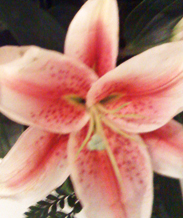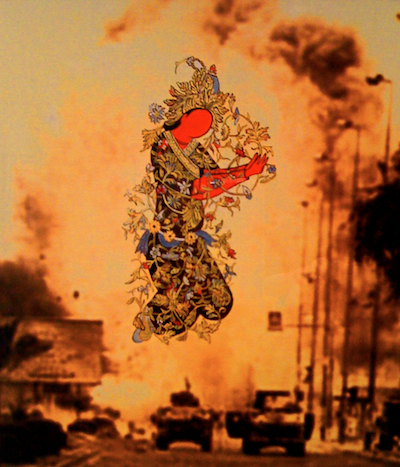![]()
Videodrome : Jessica Fenlon
Re-Vision
1.
I once joked that Pittsburgh asked its artists to gentrify the whole damn city. This was in 2002, the year I moved here. The city was hemmorhaging its population faster than it is now. Studies about the positive financial impact of artists on the community were being published. Richard Florida's Rise of the Creative Class, celebrating the revitalizing effect of creative types on local economies, was published that April. If we make Culture, they will come! Or maybe, they'll stay.
Investments were made, the kind of investments that expect a measurable return. Murals justified by research showing how a well-kept neighborhood prevents violent behavior. Other thinktank research justifying financial investment in the arts because arts activities provide some other guaranteed result to the community.
Five years later the Heinz foundation quietly began withdrawing some of its investment in the creative community. A few weeks ago, The Carnegie Institute dismantled the remains of the Three Rivers Arts Festival, moved its remaining management into the Museum of Art, and cancelled the fall installment of Flux. Institutions like the Heinz Foundation and the Carnegie Institute are elephants. When elephants cough, we all get a cold.
In the past few years a number of independent art galleries have opened and closed. Some artists bemoan the demise of their gallerists, others gloat watching people fail. I think to myself, Of course the best ones open and close. They attempt serve the interest of the art work.
When I was an undergraduate at the University of Wisconsin I had the privilege of studying with artist/theorist Michelle Grabner for two years. One of her grand statements rings in my ears. "Remember, kids. Art can't save the world".
2.
Steady the hand of the surgeon
That his stitches will not yield a twisted scar ~ ~ ~ anon
 On the second trip through Suzanne Slavic's opening, I noticed the bouquet of stargazer lilies. Stargazers often grace viewings of bodies before funerals. Their heavy sweet perfume covers any possible smell of decay.
On the second trip through Suzanne Slavic's opening, I noticed the bouquet of stargazer lilies. Stargazers often grace viewings of bodies before funerals. Their heavy sweet perfume covers any possible smell of decay.
Here it accompanied images in which the artist painted a scrim of beauty atop photographs of human-wrought destruction.
There it is, the single-sentence description of work so complex it had me taking a second trip through the galleries during the opening party. Simple premise with richly complex results.
All Slavic did was paint restorative images atop photographs of destruction. Slavic takes the illusion of re-presented reality embodied in the visual language of disaster photography and applies another language to its surface. Her painting techniques re-surface the photographs both physically and illusively. Slavic's painting challenges the authority of photographed reality. In some pieces, the photograph's reprint reveals pre-print image manipulation.Those manipulations stretch and layer the illusion-atop-illusion conceit of the work
She creates a tension between surface and depth that allows the viewer to pry themselves back from the horror presented in the photograph and consider the physical reality of the image as a photograph. The viewer becomes more conscious of the nature of photography as created object.
Now we consider created reality atop created reality.
Each image contains competing narratives. Her painting technique, reminiscent of Islamic miniaturists, quotes the inner mythology of Sufi poetry. I recognized scenes and passages from a variety of Arabic story-sources. I compared painted story to photographed story. I considered the tension between 'real' and 'imagined'. I thought about how photography traditionally references our belief in the representation of a concrete reality, and how painting speaks to our imagined projections, our inner fairy-tales.
 In one grouping of pieces, Slavic painted imagined repairs atop "real" destruction. Literal bandaids punctuated one work, a gesture that shattered the layers of illusion meticulously wrought in other pieces. The concrete sentiment of the band-aids, their literal presence, made her intent explicit. The particular ineligance of sculptural intrusion struck me as both a well-meant experiment and a line of thought best abandoned.
In one grouping of pieces, Slavic painted imagined repairs atop "real" destruction. Literal bandaids punctuated one work, a gesture that shattered the layers of illusion meticulously wrought in other pieces. The concrete sentiment of the band-aids, their literal presence, made her intent explicit. The particular ineligance of sculptural intrusion struck me as both a well-meant experiment and a line of thought best abandoned.
While in this room, the phrase "tikkun means to mend" ran through my mind. I was considering images of the destroyed middle east, images reconstructed by a Western hand in an Islamic vocabulary. Why not remember a phrase from Kaballah, a Jewish spiritual practice born in the Middle East? In this tradition, the highest calling of a practitioner is to work to repair our collective consciousness, and the connections we have in, to, and with reality.
Slavic's work will challenge those who turn a blind eye on the consequences of human misbehavior. She's working with one of our oldest problems: We are violent, destructive, and self-aware. How do we consider the brokenness we make? How do we respond to the consequences of our violence? What is the role of witness, of perpetrator? How do we bridge the gap between our ideal intents and our material failures?
Consider our media's studious avoidance of showing New Orleans' squalid side. We adeptly avoid considering the real decay in particular Pittsburgh neighborhoods. Watch how the media won't provide images of Galveston after Ike, just as the media did not show the devestation burned across San Diego County last year.
Photography's intrinsic authority reinforces particular views of the world. Perhaps the media's awareness of this truth keeps us blind to images of domestic destruction. Do we fear that our reiteration of reality will become a fixed truth? Has the photograph become referent to a reality more true than our own our own capability to solve the problems it presents? Will we believe ourselves out of creating a replacement for this rubble, that bombed landscape?


